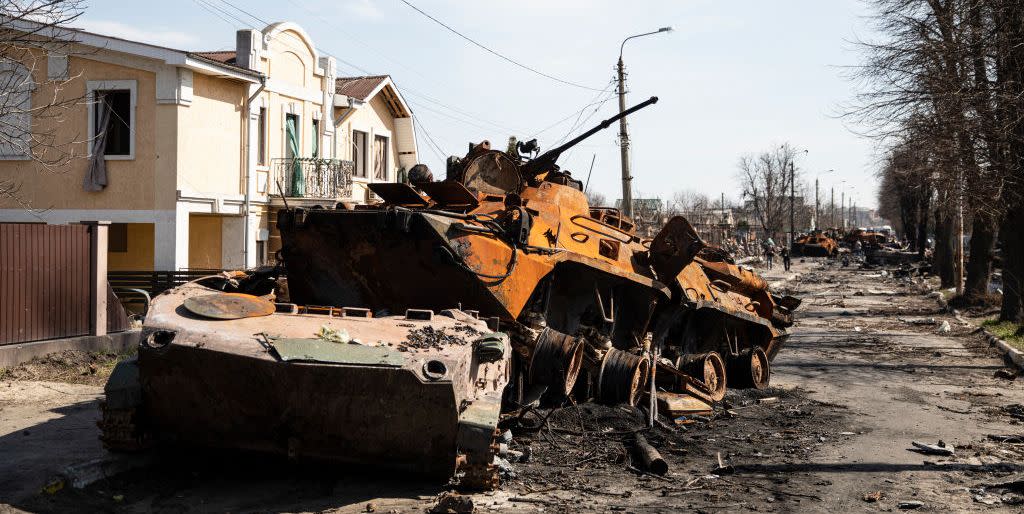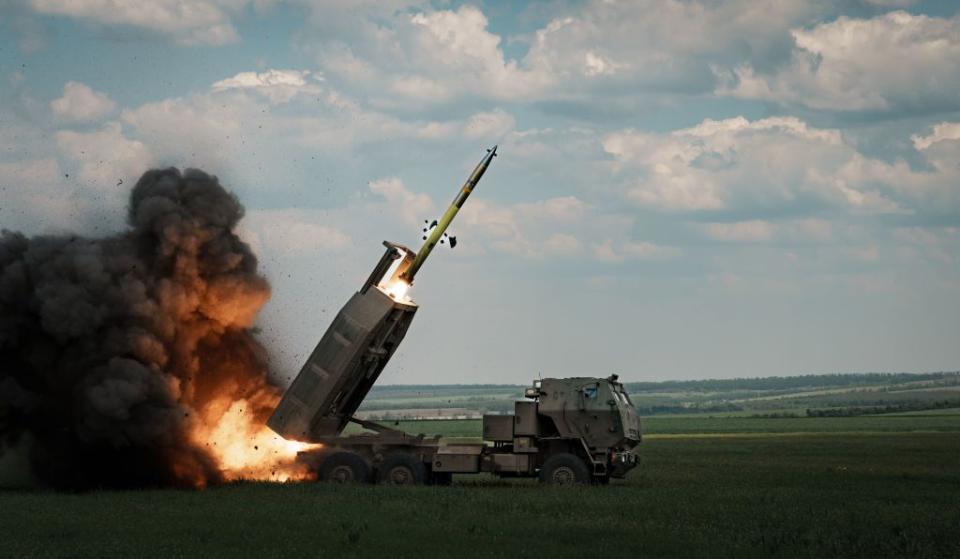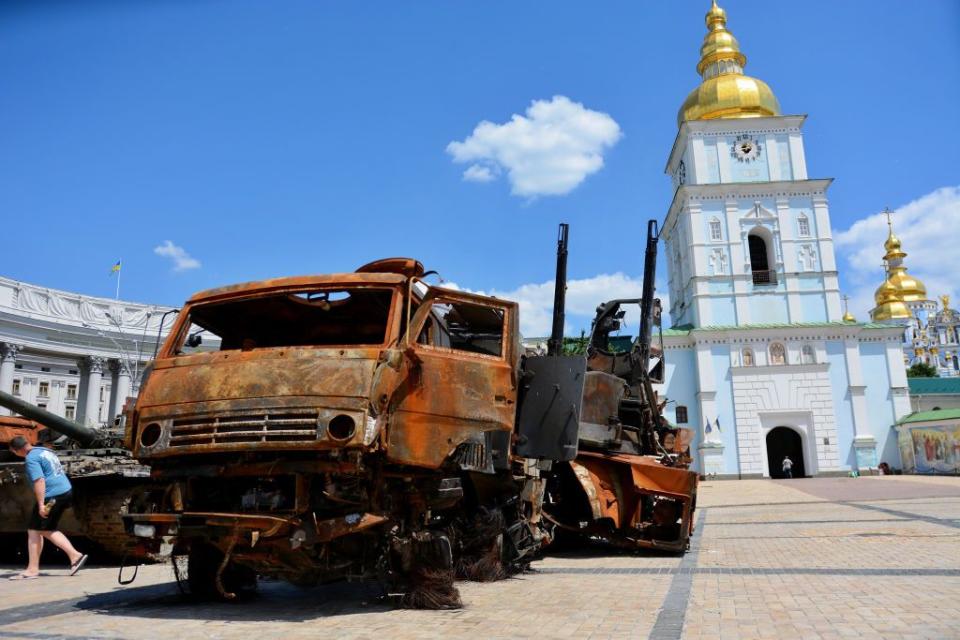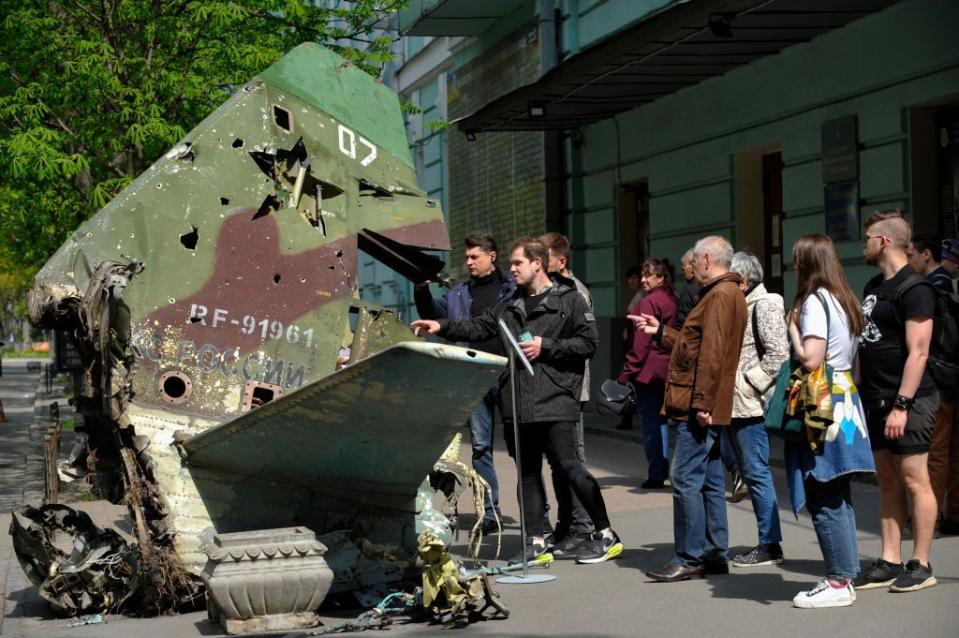7 Lessons Russia Learned From Its Epic Failures in Ukraine

In the first weeks of Russia’s 2022 invasion of Ukraine, a Ukrainian soldier on the frontline reflected on the unbelievable missteps of Russia's on-paper mighty military, concluding that the Ukrainian forces were “very lucky they’re so f-ing stupid.” The offhand remark—undeniably true at its core—rapidly became a popular meme still invoked a year later in the war.
But when armies at war aren’t utterly overwhelmed, they inevitably adapt as a result of their experiences in the field—especially the disastrous ones, as have happened many times in Russian/Soviet history. And though adaptation may be imperfect due to flawed institutions, it may still manage to curb the bite of an opponent’s most effective new weapons and tactics while swapping out demonstrably failed methods for new ones.
A report published in May by Jack Watling and Nick Reynolds of the UK’s Royal United Service Institute (RUSI) think tank discusses Russia's adaptation, based primarily on interviews with Ukrainian officers. Titled “Meatgrinder: Russian Tactics in the Second Years of Its Invasion of Ukraine,” it features plenty of unwelcome news regarding course-correction of some of Russia's most glaring errors, particularly using technological fixes.
Watling’s warnings may seem dyspeptic and ill-timed as Ukrainian forces are increasingly poised to lunge forward in counteroffensives aimed at liberating occupied territory. As the report’s title suggests, there’s still plenty of stupid to go around, as well as adaptations that only amount to a band-aid over a rotten institutional core.
But trying to propagandistically focus only on the stupid and ignore the smart in Russian adaptation risks making that smart all the more effective. Ukraine’s own armed forces, and its foreign allies, have been continuously adapting, too—and need to remain a step ahead by recognizing and adapting to Russia’s shifts faster than Russian forces can adapt to Ukraine's. That race follows the OODA decision-making loop—originally developed for fighter pilot tactics, but now applied more broadly to military and business strategy.
Let’s look, then, at seven key adaptations identified in the RUSI report.
1. Rationalizing the roster: cannon-fodder to the front, elites in the wings
While mobilization helped Russia’s military make back its serious manpower deficit for most of 2022, the newly recruited forces received wildly different degrees from training, some thrust straight into battle after just one or two days, other training for a few months. In Watling’s analysis, Russia has rationalized how it manages these troops of varying skill-level according to a cynical logic.
‘Regular’ Russian units in the mechanized divisions are viewed as capable of holding territory, but not of capturing it in close combat.
But according to the report, units that are less well trained and less well equipped are viewed as cannon fodder to be dispatched to attack Ukrainian lines in five-man teams. When Ukrainian forces open fire and destroy the attacking squad, their positions are exposed, allowing elite specialists—including snipers and heavy weapons operators positioned behind the frontline—to zero in and inflict casualties. And if the expendable troops get lucky and survive, they reveal a weak point that a larger force can exploit.
Serious close combat missions are reserved for elite assault troops who are better trained and equipped—mostly, that means Russian Naval Infantry brigades, Air Assault divisions, Special Forces units, and some veteran Wagner mercenary units. These are rotated in-and out of priority battlezones rather than holding ground.
Overall, new Russian assault tactics (detailed in a captured manual!) have worked well in built-up urban areas, but poorly in wilderness areas where assault units are more easily cut down by Ukrainian heavy weapons and armored vehicles while trying to traverse open fields.
2. Russia’s re-centralized artillery doctrine
Russia entered the war with a large share of its huge artillery arm dispersed into tank/infantry units called battalion tactical groups. This dispersion, and the battalion tactical group in general, performed extremely poorly in the first half of 2022, and now much of the Russian artillery has been re-centralized into artillery brigades.

There’s a logic to this, as the sheer weight of fire from Russian artillery has turned out to be “the main shaping effort” for Russian battlefield. Due to a lack of effective close combat troops, Russian forces seeking to capture ground often depend on artillery to utterly destroy or drive out enemy forces, rather than just damaging and suppressing them enough for close combat troops to prevail in an assault.
Russia’s artillery brigades benefit from an “reconnaissance fires circuit” (ie. kill chain) enabled by orbiting Orlan-10 surveillance drones. Those drones acquire targets, which can be struck within 3-5 minutes of detection—more rapidly than Russia’s very ponderous traditional artillery-fire support structures. The kill chain can also be established on targets geolocated by their electromagnetic signature, but this usually takes longer (20-30 minutes).
However, Russia’s highly hierarchal command culture has a downside. Russian units that are deployed next to each other in the field but coming from different formations often aren’t good at helping each other in timely fashion, as they route requests for support up the chain of command.
3. Downgrading ammo supply, changing methods
Russia burned through an estimated 12 million artillery rounds in 2022. But Russian arms factories are estimated to produce ‘only’ 2.5 million rounds a year. The rest of the use is supplemented by foreign purchases from countries like Iran and North Korea.
Despite this leaner ammunition supply situation, Russian shell expenditures are still projected to reach 7 million through 2023 at the current pace—still nearly three times domestic production.
Reportedly, standard 152-millimeter howitzer shells are increasingly substituted with 120-millimeter mortars (still very deadly, but with much shorter range). Grad multiple-rocket launcher strikes have also become rarer. However, Krasnopol laser-guided shells are being used more frequently, supported by laser-equipped Orlan-30 drones. Lancet kamikaze drones are also favored for counter-battery stikes.

Watling points to new doctrinal buzzwords being taught to Russia’s artillerymen—such as using lone ‘nomadic cannons’ to attract counter-battery fire, which can be targeted back in turn—and greater emphasis on timing fires so that suppression effects occur when they’re relevant.
4. Protection against HIMARS attacks
An army’s frontline fighting forces depend on “softer” support echelons in the rear for command-and-control, ammunition, fuel supply and more. In the summer of 2022, Russia’s support structures—in the form of fuel depots, command centers, and ammunition depots—began erupting in spectacular balls of fire due to GPS-guided rockets fired by HIMARS and M270 (newly donated to Ukraine) that could accurately hit targets up to 50 miles away.

This marked a turning point in Ukraine’s favor. But eventually, Russia’s military adjusted, pushing depots and headquarters further back, outside of HIMARS range. That decreased Russian efficiency, as more time was needed to deliver supplies to the frontline. But it proved more survivable, particularly as new facilities were dug in more securely below the earth.
Moving bases back alone would have been only a temporary band-aid, as Ukraine was bound to acquire longer-range strike assets—and eventually did in the form of air- and ground-launched SDB glide bombs compatible with HIMARS. But due to Russian adaptation, they didn’t debut as impactfully as HIMARS did.
First, Russia began protecting HQs and important depots with GPS-jamming, throwing off the accuracy of these munitions. More broadly, Watling reports that Russian air defense apparently finally became capable of downing a “significant number” of supersonic M31 rockets launched by HIMARS.
According to Watling, the Russian Army has tracked S-300VM long-range systems (AKA the SA-23 Giant) and Russian Aerospace Force S-400 long-range air defense systems now systematically protect Russian command centers and logistical hubs. Of course, these aren’t invincible—the first S-400 system was destroyed in May, seemingly by HIMARS.

Apparently Russian short-range air defense vehicles—its Pantsir and Tor-M-series systems—have “massively improved.” This is thanks to being integrated into longer-range air defense networks, notably including the 48Ya6 Podlets-K1 radar. The vehicles are aided by patrolling Su-35S jets with effective look-down-shoot-down radars.
This has also made strikes by Ukrainian attack aircraft extremely risky. The report says S-400s and Su-35s have downed aircraft from 93 miles and 110 miles away respectively. These feats likely involved relaying target-tracking data from more than one platform.
5. More secure communications
Russian military communications were an open book to Ukrainian forces early in the war, leading to the death of several Russian generals. Now, command posts at the brigade level and higher are positioned further back (typically 12 miles) and use more secure lines of communication based on hijacked Ukrainian telecom infrastructure and the extensive use of field cable and micro-link relays. However, smaller units (battalions, companies, etc.) still rely on unencrypted radios and cellphones, and often fail to use codewords while communicating.
6. Russia’s improved electronic warfare
In the war’s first months, Russia’s formidable electronic warfare (EW) branch was poorly integrated, leading to over-optimistic gloating that it was a paper tiger. But Russia’s military eventually upped it game, and now deploys one major EW system every 6 miles, usually situated roughly 4 miles back from the frontline. These are primarily aimed at disabling Ukrainian drones, particularly using the Shipovnik-Aero system which can disguise its comms signature to resemble that of more innocuous systems for self-preservation. GPS jamming/spoofing also can misdirect drones.
Downstream from those powerful systems, Watling’s sources assess Russia has integrated at least one counter-drone system—typically a drone jammer gun—into every Russian platoon. This indicates that such weapons may be becoming a standard attachment to even small combat units.
Russia signals intelligence (SIGINT) systems have also become proficient in intercepting and decrypting signals—even those from Motoral radios using 256-bit encryption, most likely using a system called Torn-MDM. They’re also capable of jamming Motorola radios to a depth of 6 miles from the frontline. Russia’s military also employs eight specialized Mi-17 helicopters to conduct longer-range jamming.
Lastly, Russia is increasingly using a technique to generate a vast number of fake drone signatures that will be detected by enemy sensors—a technique that may be used to shield the real drones from fire, or cause Ukrainian troops to waste valuable missiles shooting at ghosts.
7. Russian air power: crude “flying artillery”
Russia’s tactical air force (the VKS) remains vastly less capable than the U.S. Air Force due to a lack of capability to use precision-guided weapons at scale, leading to inability to penetrate or adequately suppress Ukrainian air defenses.

After heavy early-war losses, Russian combat aircraft have primarily attacked ground targets by lobbing S-8 unguided 80-millimeter rockets in an arc over long distance. This is inaccurate by Western standards, but is partially effective as fast-reacting ‘flying artillery’ to disrupt Ukrainian forces massing for an attack.
Another crude-but-newer tactic adopted by Russian warplanes involves standoff attacks using ‘dumb’ FAB-500 bombs modified with glide-bomb kits. That allows them to attack targets from up to 43 miles away. Though much less accurate than U.S. JDAM glide bombs, the standoff suffices to protect Russian planes from Ukrainian air defenses—or it did, until Ukraine managed to down a glide-bombing Su-34 and three escorting aircraft while over Russian airspace, possibly in an ambush using newly-opertaional Patriot missiles.
Watling warns that Russian glide-bomb attacks may grow in effectiveness:
“It is anticipated, however, that these strikes are providing data for the refinement of the glide kits and, more importantly, for the calculation tables used to determine when they are released, which may see an improvement in accuracy over time. If employed with greater concentration, it is also anticipated that this capability will begin to be employed against battlefield targets.”
The report warns that, should Ukraine’s medium- and high-altitude air defense missiles get neutralized or exhausted, Russian air power could have a much greater impact on the ground war.
You Might Also Like


